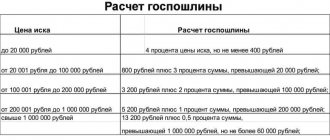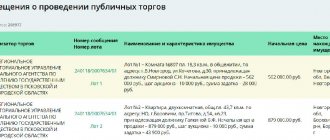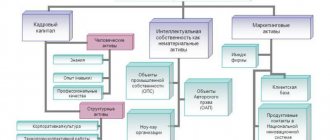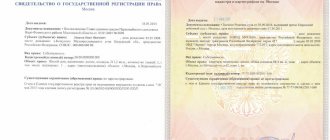State duty on claims for recognition of rights
Claims of this kind are classified as property claims and are subject to assessment.
The amount of state duty will be determined based on the value of the property. The value of property is determined by approximate market valuation, contract value or cadastral value. The state duty is determined in accordance with Art. 333.19 of the Internal Revenue Code. So, with a property value of 3,000,000 rubles, its size will be 23,200 rubles. The maximum amount of state duty is 60,000 rubles. We wrote in detail about the costs of litigation here
Drawing up an application to the judicial authorities
To recognize ownership of real estate, it is necessary to formulate a statement of claim. The document is prepared on the basis of the requirements covered in Article 131 of the Code of Civil Procedure of Russia. The current legislation of the Russian Federation does not have a single sample claim, and its structure and essence depend on the circumstances of the case.
Article 131 of the Civil Procedure Code of the Russian Federation “Form and content of the statement of claim”
Structure
The structure of a claim to the court for recognition of property rights consists of the following information:
- Header (name of the authority where the papers are sent, the applicant’s full personal form, including registration address and contacts).
- The central part is the title of the document.
- The main part is the essence of the appeal, the list of demands, the cost of the claim, if the case relates to a property dispute.
- The final part is the attachment of papers referred to in the text of the application.
- Signature, date.
Note: if a representative acts on behalf of the plaintiff, then you must attach a copy of the notarized power of attorney. Indicate the authorized citizen in the text.
The document is printed in a number of copies for each participant in the trial.
Form of claim for recognition of ownership rights
Details of the parties
The applicant indicates in the text of the document information about himself as the plaintiff - last name, first name, patronymic, residential and registration address, contacts.
Read also: The principle of freedom of will
The defendant may be the individual or legal entity with whom the dispute occurred. In addition, it is allowed that the defendant may be a notary, a government agency that refused to register the rights to property to the plaintiff. If a third party is involved in the case, then information about it is written in the “header” of the paper. These persons are authorized to make demands.
Rules for describing the dispute and the position of the plaintiff
The main part of the text describes the essence of the trial. Thus, citizens can initiate a claim for recognition of ownership of an apartment. The information provided must be clear, without ambiguity. The use of profanity and slang expressions is not permitted. After reading the papers, the judge should have a clear understanding of the applicant’s requirements and grounds.
The subject of the statements is also described specifically, indicating the characteristics of the object that allow it to be identified. For example, if the dispute concerns real estate, then the address and number according to the cadastral passport are recorded.
Requirements
The “claims” section is the conclusion of the claim. They are divided into 2 types - property and non-property. The first option forces the author to set the price in accordance with the formula. In this case, the calculation is made in the document.
Please note: if the requirements relate to a house or other object, then the value according to inventory papers is taken as the basis.
Sample application
The application along with the attached papers is submitted to the department office in person or through an authorized person. It is possible to send documents by Russian Post.
Determination of ownership rights to a shared construction or investment object
The most common basis for a claim for recognition of ownership of an apartment is the participation of a citizen in shared construction and the subsequent impossibility of registering ownership rights peacefully. What may cause the need to go to court?
The initial share participation agreement has not been registered
The obligations of one of the parties under the shared participation agreement have not been fulfilled - there is no certificate of acceptance and transfer of the apartment confirming this - its signing is impossible, the developer avoids signing it or does not give its copy to the shareholder
The house or part of it is not registered in the cadastral register
There were technical errors in the title documents
Step-by-step instructions for recognizing ownership of a land plot through the court
On the basis of Article 30 of the Civil Procedure Code of the Russian Federation and Article 38 of the Arbitration Procedure Code of the Russian Federation, all claims regarding disputes arising regarding real estate are considered in the district court of general jurisdiction at the location of the property. Ownership of a land plot can be recognized in court starting with the preparation of an application .
Statement of claim for recognition of ownership of a land plot: how to draw it up correctly?
Example of a statement of claim for recognition of ownership of a land plot
First, the parties to the dispute are determined, including the plaintiff and the defendant. The defendant is the person who has made illegal claims to the land owned by the plaintiff. If a dispute arises with authorized bodies, the defendant is a manager or other official authorized to resolve the identified issue. In this case, claims can also be understood as a ban on privatization or registration of real estate and other inappropriate actions that prevent the legal registration of ownership of an object.
Regardless of the specific case, the document should be given the name “Statement of Claim for recognition of ownership of a land plot.” After the name of the document, the circumstances that motivated the initiation of the process should be succinctly and precisely formulated. The sequence algorithm is as follows:
- time and place of obtaining ownership of the plot, the grounds of the right set out in the title document. Document details.
- Cadastral characteristics of the land plot , indicating the main parameters and location.
- Actions of the defendant who violated the rights of the owner of the site. It is required to justify this point by reference to the available evidence.
- Actions of the plaintiff associated with an attempt to resolve the dispute through compromise or to convince the defendant of the unlawfulness of the claims. It is required to refer to the pre-trial procedure.
- The defendant's reaction to warning or ignoring an attempt at conciliation.
- Justification of the legality of the claim , with reference to the available evidence.
Upon completion of the presentation of the main provisions, it is required to express an appeal to the court with a request. It is advisable to indicate two points:
- admit the claim in full;
- recognize ownership of the land.
A claim for recognition of ownership of a land plot: a sample can be downloaded for free!
Documentation
Attached to the application (a sample application for recognition of ownership of a land plot can be downloaded above), at the end of which a list of them is given. Copies of documents are collected and submitted according to the number of defendants, if there is more than one. The main documents are:
- title document for land (what to do if the document is lost?);
- cadastral passport of the land plot;
- certificate of ownership, if the land is owned;
- divorce certificate – for division of property;
- certificate of inheritance – for inheritance disputes;
- passport, and for representatives - a notarized power of attorney;
- receipt of payment of the duty;
- evidence of the legitimacy of the claim.
At the request of the court, other documents are presented, including certificates from the BTI or cadastral extracts from Rosreestr.
Proof
How to recognize ownership of a land plot through the court?
Only by collecting and correctly presenting evidence!
They are collected in advance before filing a claim.
These include all official documents that can confirm the legitimacy of the claim.
For example, confirmation of responsible ownership is made by presenting receipts and invoices for the maintenance of the land plot and payment of land tax.
If there is a permanent building, you must submit a package of documentation for the house. If construction is not completed - construction permit and design documentation. In this case, it is advisable to present copies of invoices on construction costs incurred.
If we are talking about restoring title documentation , you should collect:
- extract from the household ledger;
- certificates from the archive.
In all of these cases, it is advisable to collect written testimony or invite witnesses to testify in court. If necessary, you should collect:
- administrative acts;
- expert opinions;
- conclusions of independent appraisers.
State duty attached to the application for ownership of a land plot
It is 300 rubles, if the court does not make a decision establishing the amount of the fee corresponding to the property claim. In this case, a differentiated approach will be required.
Deadlines
They play a decisive role in litigation. After an official request from the administration, notary or registration authority, it is required to meet the ten-day deadline. If the defendant ignored the notice of filing a claim, you must wait one month, counted from the date of delivery or mailing of the designated document.
In all cases, it is required to meet the limitation period, which in general arbitration disputes is limited to three years (Article 196 of the Civil Code of the Russian Federation).
Conducting controversy in court
The trial is limited to the presentation of the circumstances of the case as stated by the counterparties. Accordingly, the information presented to the court may differ radically and throw the plaintiff off balance. To maintain the required state, you should rely only on facts supported by documents and certified by testimony.
Conducting a debate requires correct dialogue . In order not to violate its regulations, it is necessary to appeal to the court, and not react emotionally to the defendant’s statements, even if they turn out to be false.
The success of the procedure and the achievement of the goal by the plaintiff depend on how clearly the action plan is clearly developed. To do this, you should build the logic of the speech so that it appears convincing to the magistrate.
As a result of consideration of the dispute, the parties are invited to conclude a settlement agreement and make mutual concessions. If the result seems doubtful, it is advisable to consider such a proposal with all seriousness.
Since arbitration proceedings have many pitfalls , citizens prefer to contact a representative acting in their interests. In this case, it should be taken into account that when carrying out a process against a municipality or other authorized body, a professional lawyer with experience in appearing in court will most likely participate in the debate on the opposite side.
The court's decision
Adopted on the basis of the norms of Part 1 of Art. 196 Code of Civil Procedure of the Russian Federation and Part 1 of Art. 168 Arbitration Procedure Code of the Russian Federation. It is drawn up in the form of an extract, which is handed over to the parties within three days. It comes into force 10 days after issuance. This period is given so that the losing party can challenge the arbitration award in a court of general jurisdiction of the second instance, which is the regional court. Therefore, the extract contains a motivational part (Article 170 of the Code of Civil Procedure of the Russian Federation).
Having accepted the decision, without filing an appeal, the parties will need to comply with it . If the resolution indicates the alienation of the site and the transfer of property to the winning party, it is required to vacate the territory.
If the decision is not executed, the winning party has the right to contact the bailiff service. The extract plays the role of a document of title, which is submitted to the registration authority for the accounting procedure.
An example of a court decision can be seen in the picture below or downloaded at the end of the article.
An example of a court decision on recognition of ownership of a land plot (Source)
If it turns out that the above procedure is NOT your case and legal proceedings can be avoided, read our instructions for registering property rights. without trial
Claims for recognition of rights due to acquisitive prescription
According to Art. 234 According to the Civil Code, ownership can be recognized by a person who has owned a thing for a long time - at least 15 years. Recognition of the right in this case occurs after a period of lease, gratuitous use or use on the rights of a family member of the previous owner. In this case, the following conditions must be met:
ownership was open and in good faith - that is, the property was used by the plaintiff for its intended purpose, and did not stand idle, free from rights and use
the plaintiff took measures to preserve and protect the object from encroachment by third parties
The plaintiff bore the costs of maintaining and maintaining the property. Ideally, he also paid taxes
How to recognize rights during inheritance
The inheritance procedure allows you to re-register rights to property assets that belonged to a deceased citizen. In this case, the procedure for recognizing rights will differ significantly in the presence of a testamentary form or in the case of inheritance by law. Land can be the subject of inheritance under the following conditions:
- if the plot was duly registered as the property of a deceased citizen, and there are all title documents for the land (certificate of title, extract from the state register of the Unified State Register of Real Estate, etc.);
- if the plot belonged to a person not on the right of ownership, but on another perpetual right of ownership (for example, an indefinite right of use, which under certain conditions could be re-registered as property);
- if the object belonged to the deceased under the right of lifelong inheritable ownership (this form of ownership was actively used before the entry into force of the Land Code of the Russian Federation; currently, plots under such right are not allocated).
Note! Plots to which the deceased citizen had temporary rights cannot be transferred by inheritance. For example, a leased plot cannot be transferred to heirs, but family members can continue to use the land until the end of the lease, after which they can apply for its re-registration in the usual manner.
If ownership of a land property has been officially registered, following the results of inheritance proceedings in a notary's office, the heirs acquire a similar right. At the same time, if there are several heirs, the form of the right to equity may be changed. The actual division of a single allotment can occur after receiving a certificate of inheritance and registering ownership of the shares.
Registration of rights to land will occur by submitting an application to a notary office and confirming family relationships (within the framework of a testamentary disposition, the presence of family relationships does not affect the acquisition of rights). After six months, each applicant-heir will receive part of the property assets or property rights, including land plots.
Download an application for inheritance of a land plot (sample)
If the land did not belong to the deceased citizen by right of ownership, the heirs will only acquire the right to own the plot. Further registration of property will occur by contacting local authorities on the basis of the received certificate of inheritance.
To carry out registration actions in the Rosreestr service, each heir must present a certificate issued by a notary office. If several heirs received the plot, before applying for registration they need to apply for the preparation of a boundary plan, which will reflect the shares of each co-owner. Based on the results of the registration procedure, the heirs will receive an extract from the state register of the Unified State Register of Real Estate with confirmation of ownership.
What is it and in what situations should it be applied?
When going to court to resolve any issues, the first step is to file a statement of claim containing facts that require confirmation. In what situations is confirmation of ownership of real estate required in court?
Controversial situations include:
- discrepancy between the documents available to the property owner and the established regulatory standards or the presence of an error/typo in one of the documents;
- lack of title documents, which is quite common in small towns and rural settlements;
- failure of the seller to appear at the state registration of the transaction, which may be caused by the death of a person, an emergency situation, or constitute fraud;
- a building located on a plot of land that is not properly registered is registered;
- lack of a complete package of documents from the developer and the impossibility of their execution;
- disputes regarding real estate between relatives or co-owners;
- unauthorized entry into a residential building (apartment) by third parties;
- participation in the privatization process of not all persons living in the apartment;
- arrest of real estate as a consequence of unlawful actions of the owner with the participation of several family members in the acquisition of real estate, and so on.
There are many situations in which the issue of ownership of real estate is decided by the court and it is almost impossible to list everything in one article.
Submitting claims to court
You need to submit a claim for recognition of property rights with additional papers. Current laws also provide for the possibility of presenting evidence in the following way:
- participant's explanation;
- involvement of eyewitnesses;
- photos, videos, audio materials;
- payment receipts;
- other written and physical materials.
Documentation
If the case concerns real estate, then the following must be attached as documentation:
- papers confirming ownership;
- information about the technical parameters of the object;
- when the circumstances relate to the acquisition of property due to prescription, then witnesses are involved.
You can confirm the correct attitude towards real estate by providing photographs, videos, as well as receipts for repairs performed. Additionally, a copy of the plaintiff’s passport and receipts for payment of state duty are attached.
Name of court and terms
The application is submitted to the judicial authorities of general jurisdiction. The type of institution depends on the price of the requirements:
- less than 50,000 rub. - magistrate's Court;
- over 50 thousand rubles. - district authority.
Note: when it comes to real estate, demands are sent to its location. If the subject of the case is, for example, a vehicle, then the case is filed in court at the place of registration of the defendant.
Limitation period
The statute of limitations for immovable property is 15 years. An individual who owned and used the property for a specified period or more has the right to submit documents to register ownership. The court, as a rule, satisfies the requirement if there is evidence. In the event that the period has ended and work to improve the facility has not been completed, the higher authority will make a negative decision.
Read also: Inheriting a share in an apartment
An application for recognition of property rights must be submitted within the limitation period, which cannot exceed 10 years. The specific period is determined depending on the circumstances of the case. The nuances can be found in Chapter 12 of the Civil Code of Russia.
State duty amount
Real estate is subject to assessment, therefore the state duty is calculated depending on the value of the sports item.
In the Tax Code of Russia, payment standards and calculation of the amount of the fee for property disputes are reflected in Article 333.19, paragraph 1, part 1 of the Tax Code of Russia. Article 333.19 of the Tax Code of the Russian Federation “Amounts of state duty in cases considered by the Supreme Court of the Russian Federation, courts of general jurisdiction, and justices of the peace”










